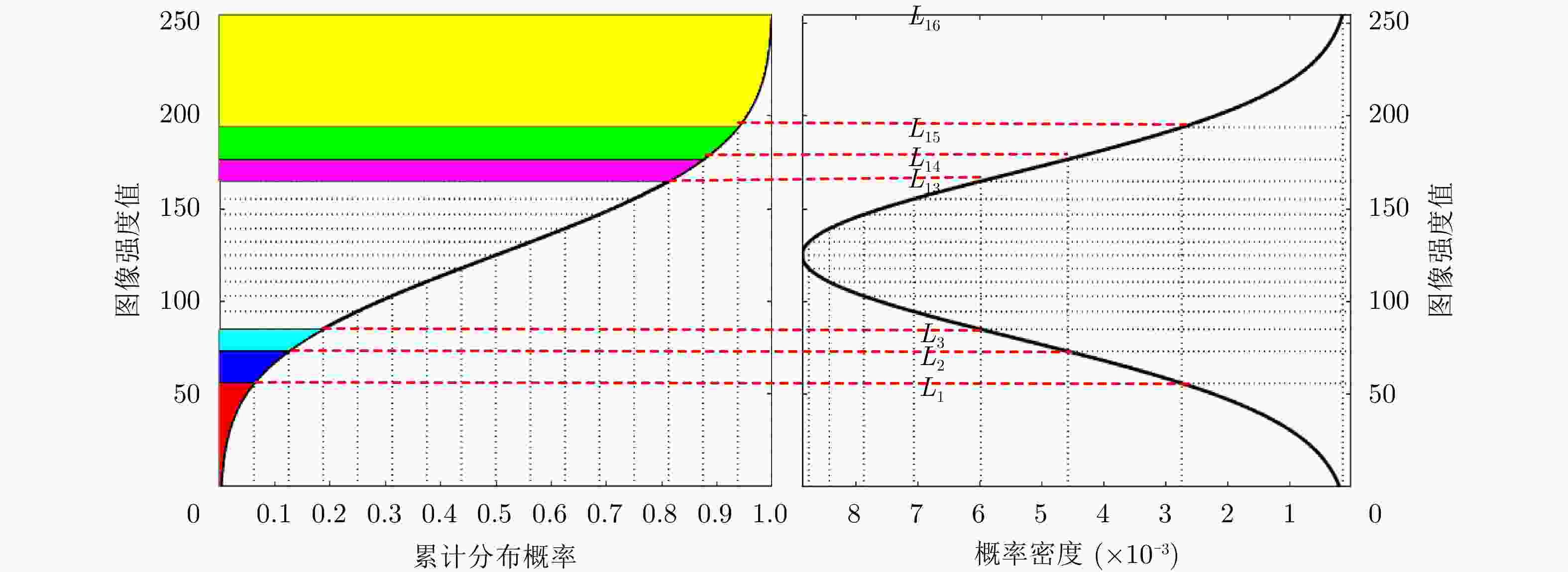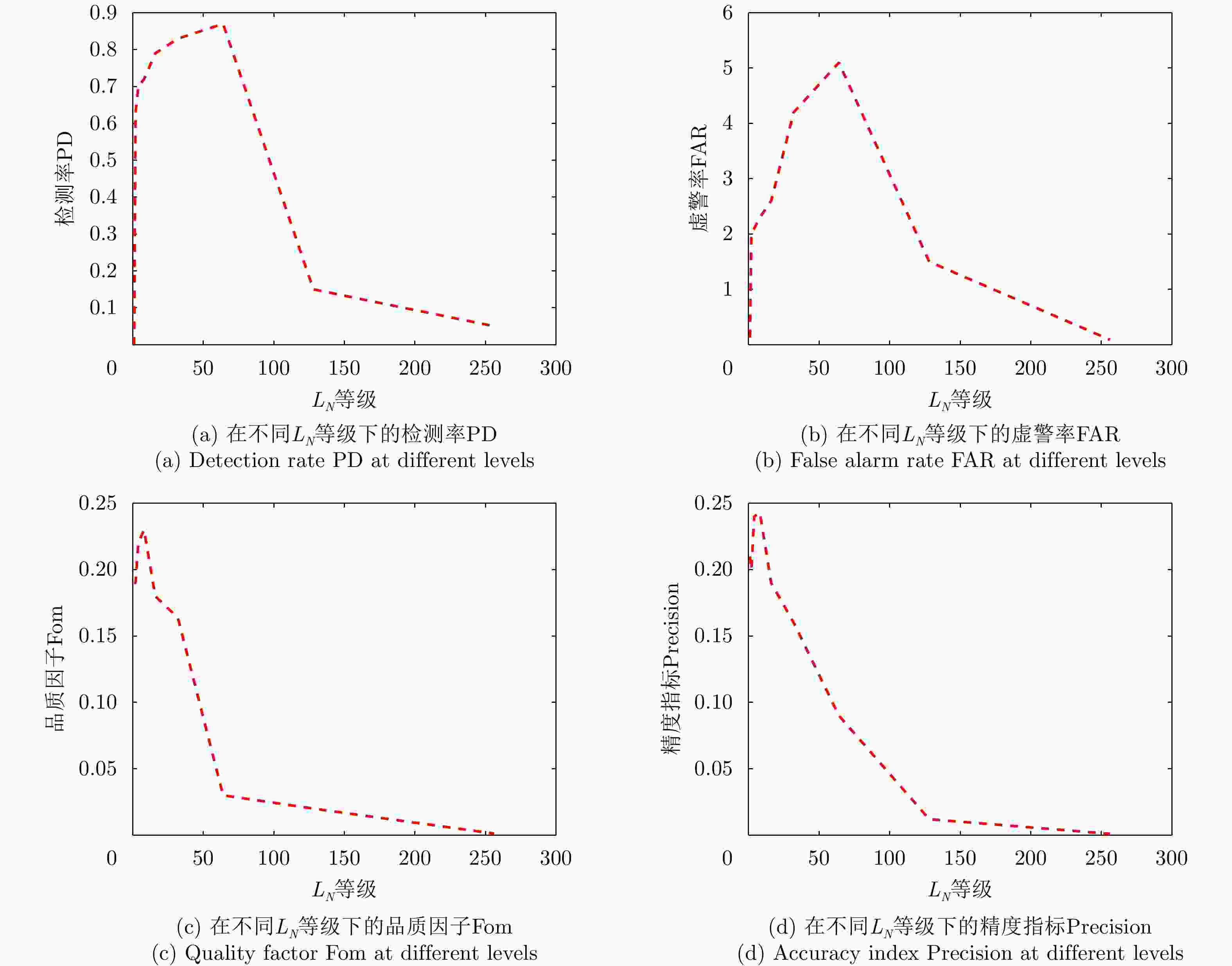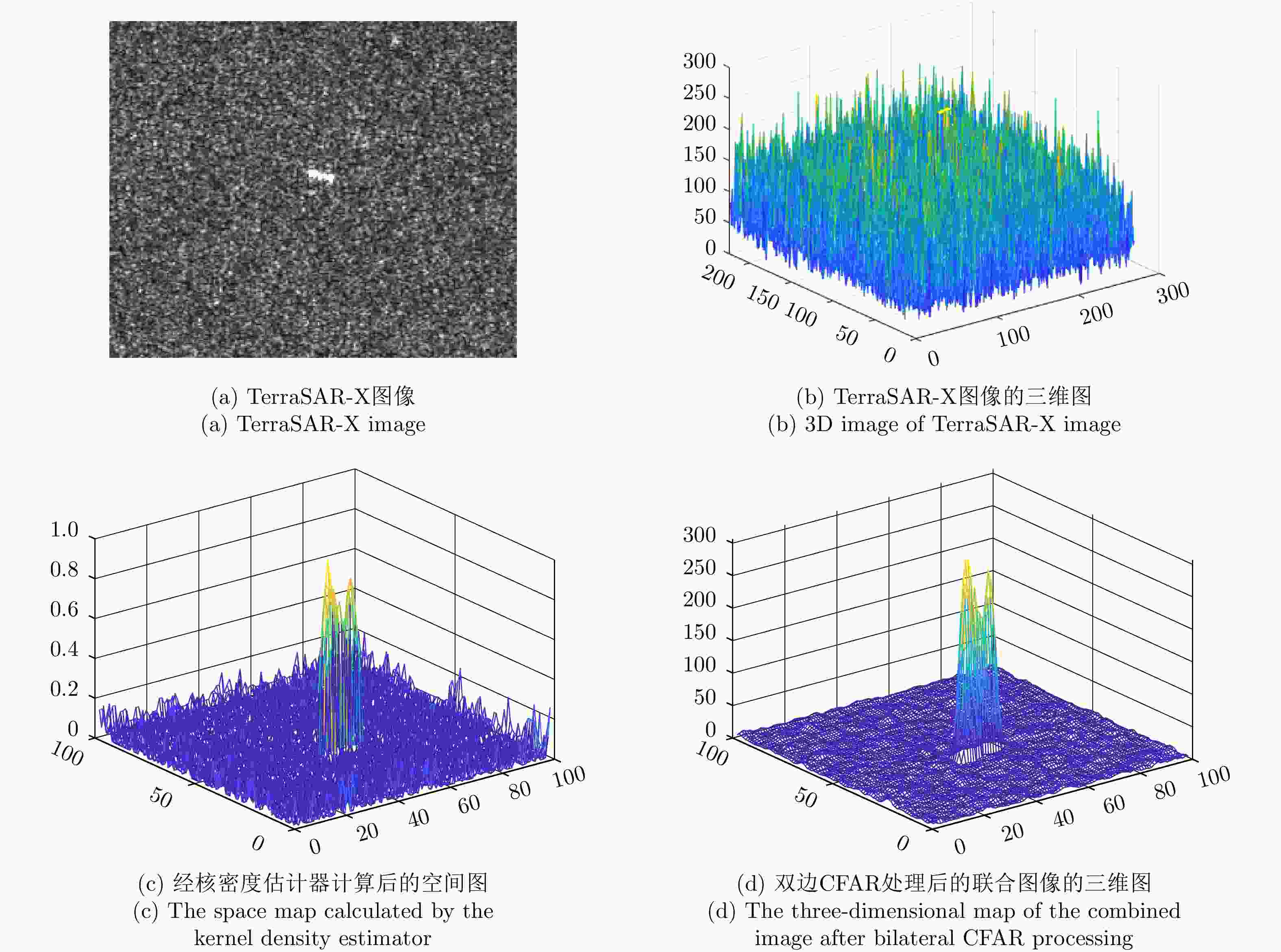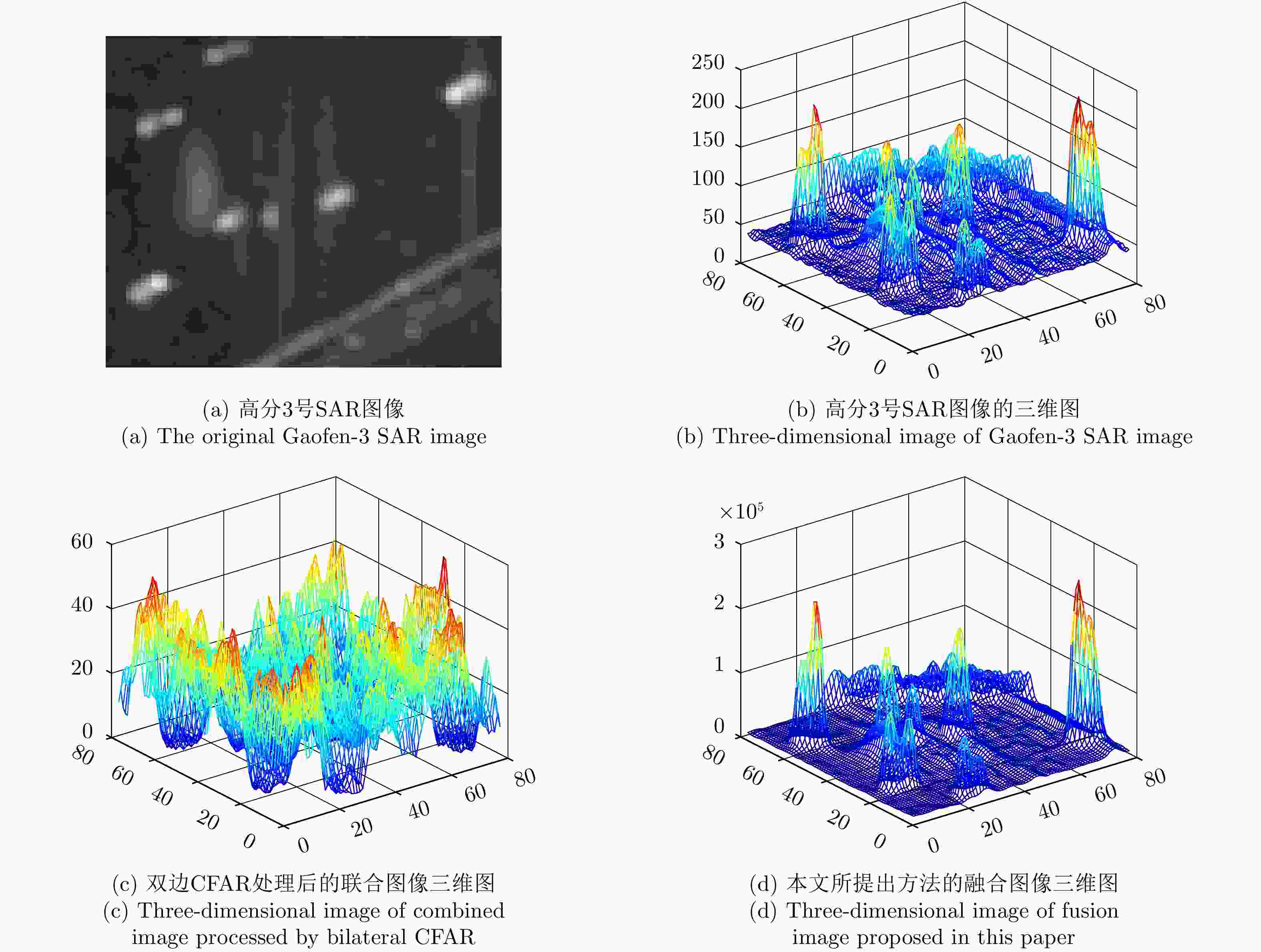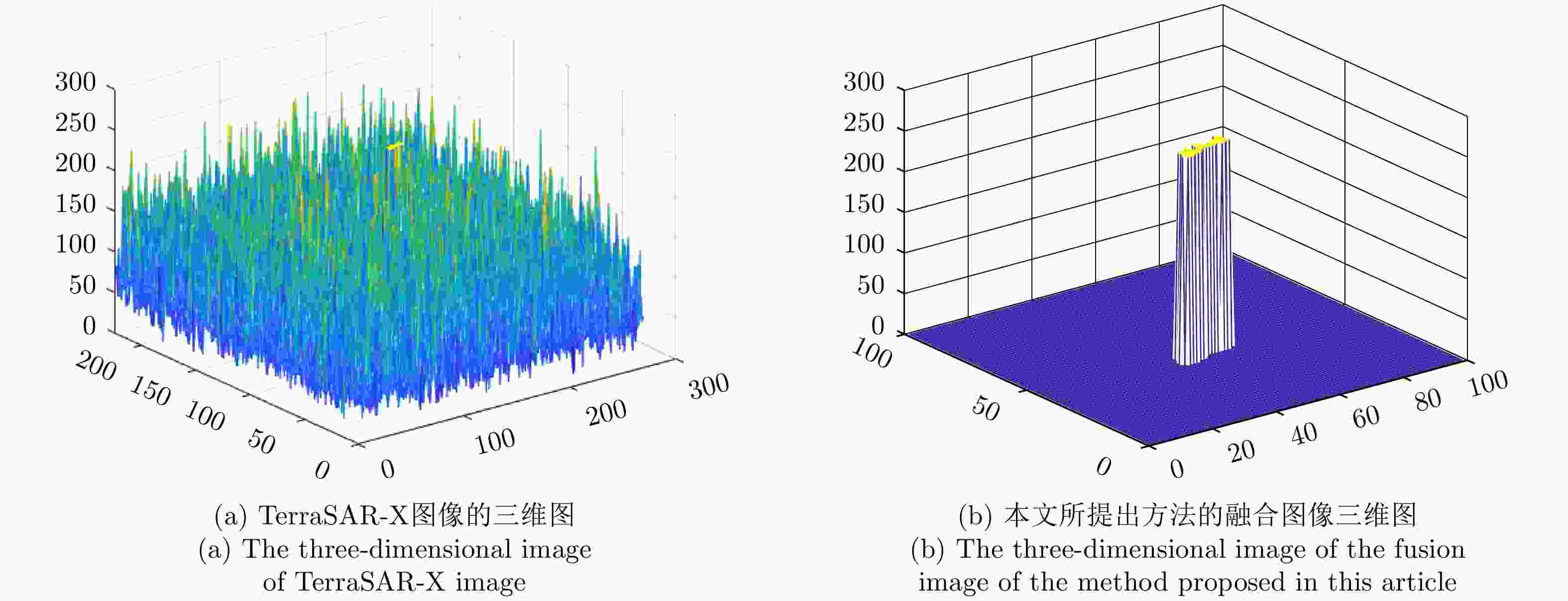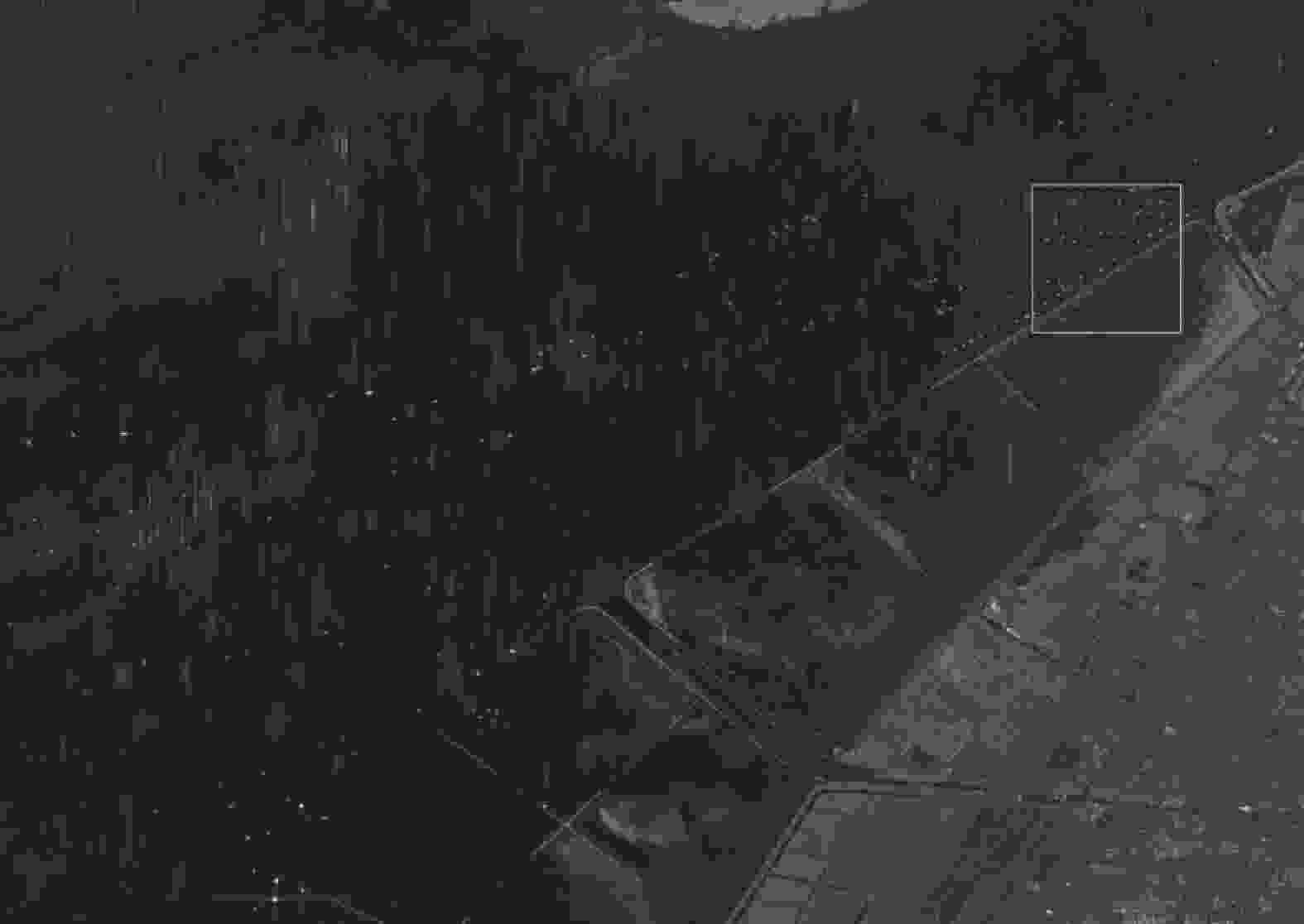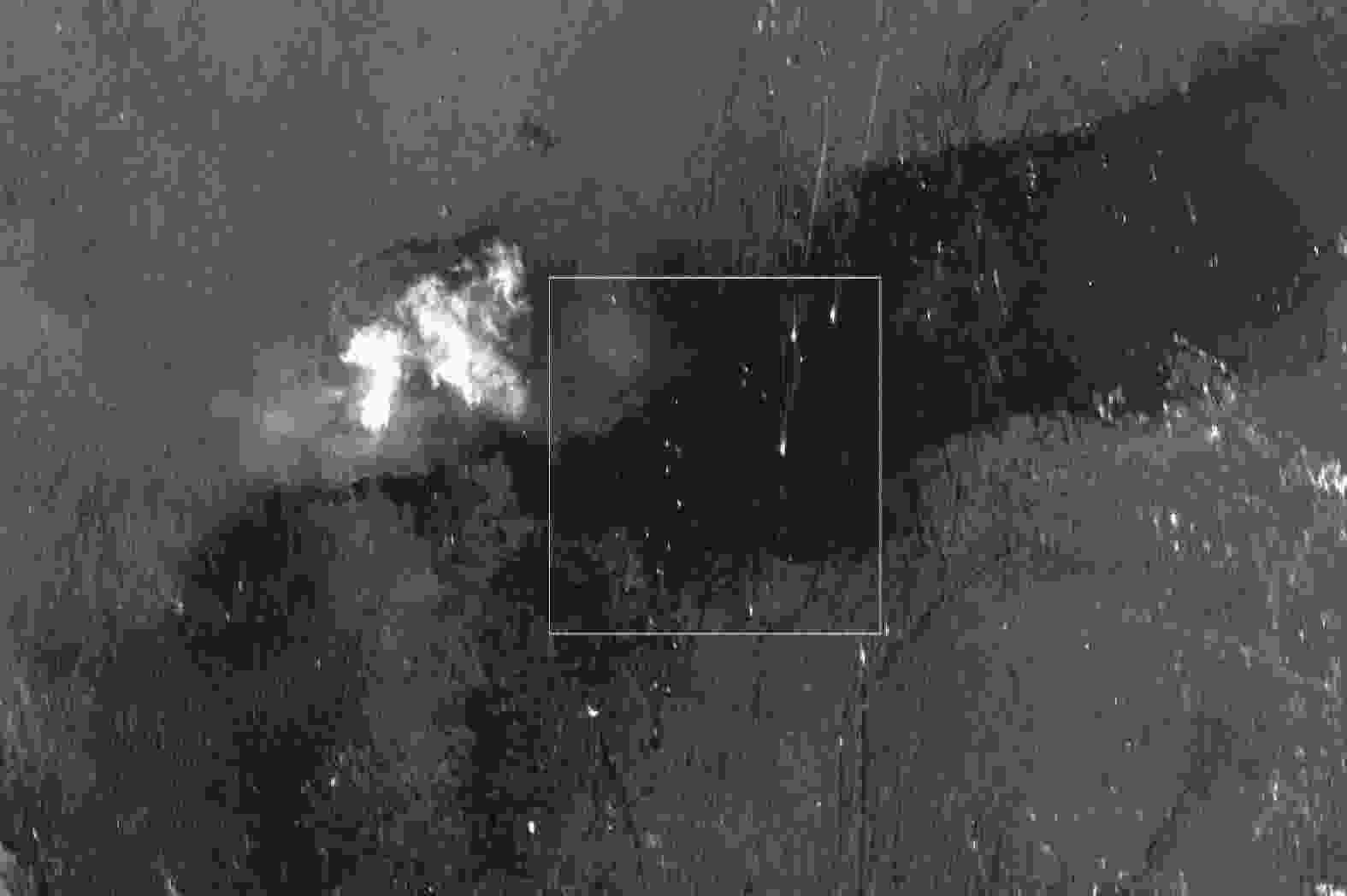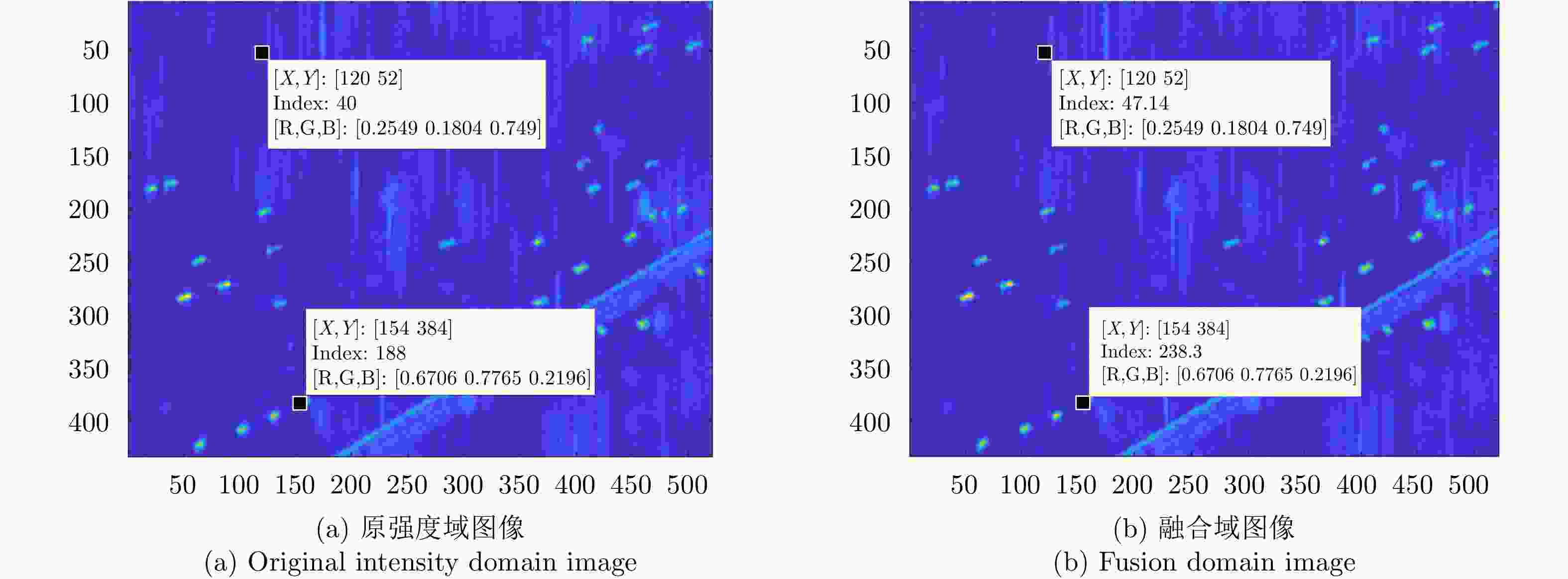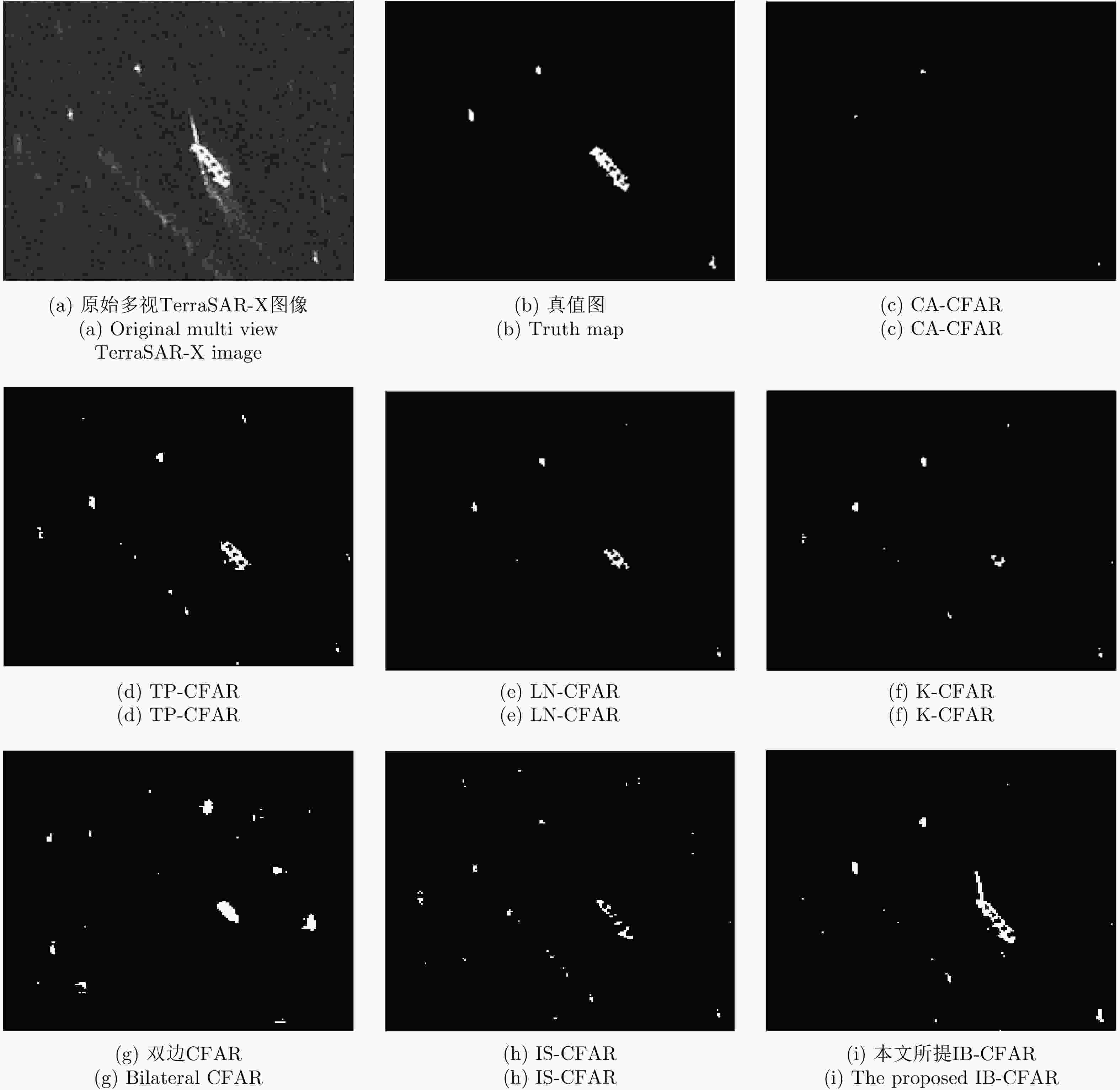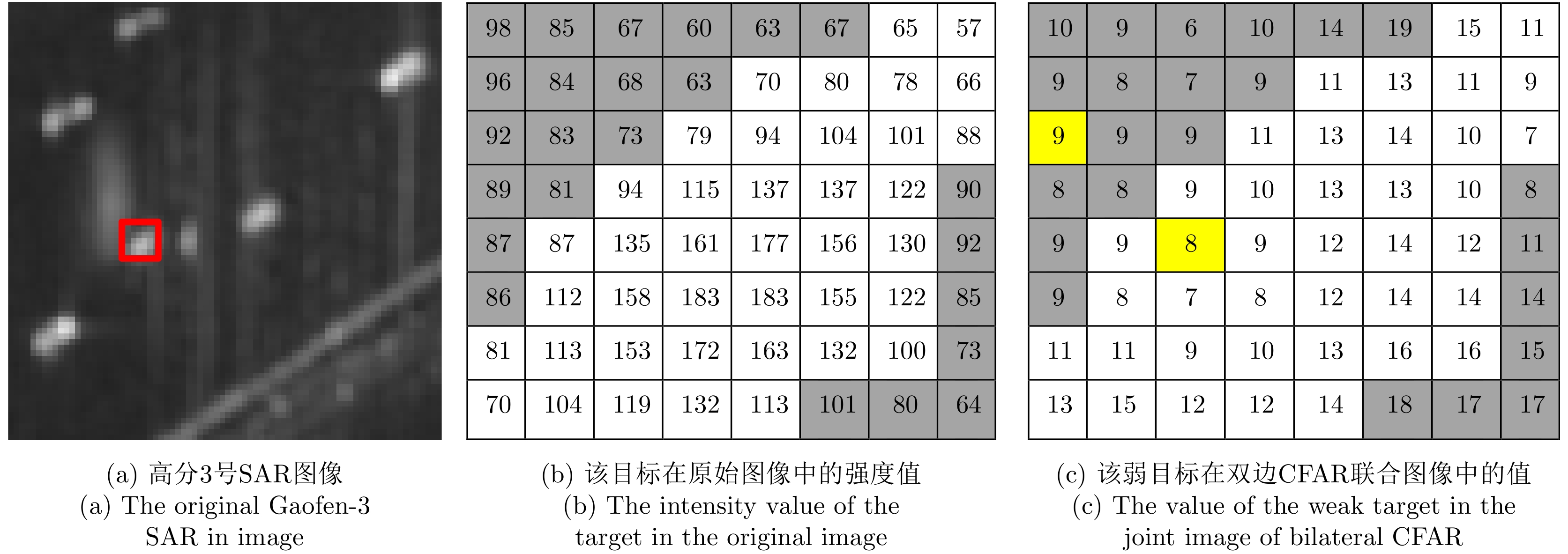An Improved Bilateral CFAR Ship Detection Algorithm for SAR Image in Complex Environment
-
摘要: 双边恒虚警率(BCFAR)检测算法通过高斯核密度估计器计算出合成孔径雷达(SAR)图像的空间信息,并将它与图像的强度信息相结合得到联合图像以进行目标检测。相较于只使用强度信息来进行目标检测的经典CFAR检测算法,双边CFAR有着更好的检测性能和鲁棒性。然而,在复杂环境下出现连片的高强度异质点时(例如防波堤、方位模糊和幻影等),核密度估计器计算出的空间信息会出现较多误差,这会导致检测结果中出现大量虚警。此外,当遇到相邻像素点间相似度较低的弱目标时,双边CFAR会发生漏检。为了有效改善这些问题,该文设计一种复杂环境下改进的SAR图像双边CFAR舰船检测算法(IB-CFAR)。该文所提IB-CFAR主要分为3个阶段来实现,分别为基于非均匀量化法的强度层级划分、强度-空间域信息融合、杂波截断后的参数估计。基于非均匀量化法的强度层级划分可以提升弱目标的相似度和对比度信息,从而提升舰船检测率。强度-空间域信息融合在于将空间相似度、距离向和强度等信息进行融合,在进一步提升检测率的同时对舰船的结构信息进行精细化描述。杂波截断后的参数估计可以去除背景窗口中连片的高强度异质点,最大限度地保留真实海杂波样本,使参数估计更加精确。最后,根据估计出的参数建立精确的海杂波统计模型以进行CFAR检测。该文使用高分3号和TerraSAR-X数据来验证该算法的有效性和鲁棒性。实验结果表明,所提出的算法在包含较多密集分布的弱目标环境下表现良好,在此类环境下能获得97.85%的检测率和3.52%的虚警率,相比于现有的检测算法,检测率提升了5%,并且虚警率降低了10%,但在弱目标个数较少且背景十分复杂的环境下,则会出现少量虚警。Abstract: The Bilateral Constant False Alarm Rate (BCFAR) detection algorithm calculates the spatial information of Synthetic Aperture Radar (SAR) image by the Gaussian kernel density estimator, and combines it with the intensity information of image to obtain the joint image for target detection. Compared with the classical CFAR detection algorithm which uses only intensity information for target detection, bilateral CFAR has better detection performance and robustness. However, with continuous high-intensity heterogeneous points (such as breakwater, azimuth ambiguity and phantom) in a complex environment, spatial information calculated by kernel density estimator will have more errors, which will lead to many false alarms in detection results. In addition, when it comes to a weak target with less similarity between adjacent pixels, it will miss detection. To effectively improve these problems, this paper designs an Improved Bilateral CFAR (IB-CFAR) algorithm in complex environment. The IB-CFAR proposed in this paper is mainly divided into three stages: intensity level division based on the nonuniform quantization method, intensity spatial domain information fusion and parameter estimation after clutter truncation. The intensity level division based on the nonuniform quantization method can improve the similarity and contrast information of weak targets, leading to improved ship detection rate. The information fusion of strength spatial domain is to fuse the spatial similarity, distance direction and strength information, which can further improve the detection rate and describe the ship structure information. Parameter estimation after clutter truncation can remove continuous high-intensity heterogeneous points in the background window and retain the real sea clutter samples to the maximum extent, which makes parameter estimation more accurate. Finally, according to the estimated parameters, an accurate sea clutter statistical model is established for CFAR detection. In this paper, the effectiveness and robustness of the proposed algorithm are verified by using GaoFen-3 and TerraSAR-X data.The experimental results show that the proposed algorithm performs well in the environment with more dense distribution of weak targets, and can obtain 97.85% detection rate and 3.52% false alarm rate in such environment. Compared with the existing detection algorithms, the detection rate increased by 5% and the false alarm rate reduced by 10%. However, when the number of weak targets is small and the background is very complex, few false alarms will appear.
-
表 1 实验中所使用到的SAR图像的详细信息
Table 1. Details of SAR images used in the experiment
Name Gaofen-3 Terra SAR Gaofen-3 Acquisition date 2017-02-25 2009-07-31 2018-09-01 Acquired region The sea area near Shanghai harbour Panama Canal Sea of Yangtze River Estuary Location E121.9, N31.0 W79.55, N8.93 E121.3, N31.5 Imaging mode Ultra Fine Stripmap (UFS) StripMap (SM) Fine Stripmap I (FSI) Band C X C Polarization VH HH HH Resolution 3 m 3 m 5 m Number of looks 1 50 1 表 2 各CFAR检测器的性能分析
Table 2. Performance analysis of CFAR detectors
各CFAR检测器 Fig. 13(a) Fig. 15(a) ${D_{\rm{r}}}$[%] Fom FAR[%] Precision Time[s] ${D_{\rm{r}}}$[%] Fom FAR[%] Precision Time[s] CA-CFAR 9.35 0.0342 2.71 0.0854 6.25 3.54 0.0354 0 1.0000 1.62 TP-CFAR 92.90 0.8342 13.51 0.8747 12.03 85.23 0.3425 38.23 0.3720 3.15 LN-CFAR 82.67 0.5813 3.84 0.6235 15.32 73.42 0.2314 3.22 0.3321 5.36 K-CFAR 89.24 0.5442 11.23 0.5442 180.25 68.53 0.2552 15.21 0.2566 27.28 双边CFAR 52.65 0.2002 68.26 0.2301 17.63 52.43 0.1002 58.25 0.1567 6.67 IS-CFAR 91.28 0.7986 32.85 0.7986 25.12 38.46 0.3342 47.36 0.4342 10.23 IB-CFAR 97.85 0.9223 3.52 0.9243 27.52 98.24 0.5894 13.28 0.6074 11.09 -
[1] 许述文, 白晓惠, 郭子薰, 等. 海杂波背景下雷达目标特征检测方法的现状与展望[J]. 雷达学报, 2020, 9(4): 684–714. doi: 10.12000/JR20084XU Shuwen, BAI Xiaohui, GUO Zixun, et al. Status and prospects of feature-based detection methods for floating targets on the sea surface[J]. Journal of Radars, 2020, 9(4): 684–714. doi: 10.12000/JR20084 [2] 李春升, 于泽, 陈杰. 高分辨率星载SAR成像与图像质量提升方法综述[J]. 雷达学报, 2019, 8(6): 717–731. doi: 10.12000/JR19085LI Chunsheng, YU Ze, and CHEN Jie. Overview of techniques for improving high-resolution spaceborne SAR imaging and image quality[J]. Journal of Radars, 2019, 8(6): 717–731. doi: 10.12000/JR19085 [3] 杜兰, 王兆成, 王燕, 等. 复杂场景下单通道SAR目标检测及鉴别研究进展综述[J]. 雷达学报, 2020, 9(1): 34–54. doi: 10.12000/JR19104DU Lan, WANG Zhaocheng, WANG Yan, et al. Survey of research progress on target detection and discrimination of single-channel SAR images for complex scenes[J]. Journal of Radars, 2020, 9(1): 34–54. doi: 10.12000/JR19104 [4] GREENSPAN M, PHAM L, and TARDELLA N. Development and evaluation of a real time SAR ATR system[C]. 1998 IEEE Radar Conference, RADARCON’98. Challenges in Radar Systems and Solutions, Dallas, USA, 1998: 38–43. [5] DAI Hui, DU Lan, WANG Yan, et al. A modified CFAR algorithm based on object proposals for ship target detection in SAR images[J]. IEEE Geoscience and Remote Sensing Letters, 2016, 13(12): 1925–1929. doi: 10.1109/LGRS.2016.2618604 [6] NOVAK L M, OWIRKA G J, and NETISHEN C M. Radar target identification using spatial matched filters[J]. Pattern Recognition, 1994, 27(4): 607–617. doi: 10.1016/0031-3203(94)90040-X [7] RAES R L, LORENZZETTI J A, and GHERARDI D F M. Ship detection using TerraSAR-X images in the Campos basin (Brazil)[J]. IEEE Geoscience and Remote Sensing Letters, 2010, 7(3): 545–548. doi: 10.1109/LGRS.2010.2041322 [8] WANG Zhaocheng, DU Lan, ZHANG Peng, et al. Visual attention-based target detection and discrimination for high-resolution SAR images in complex scenes[J]. IEEE Transactions on Geoscience and Remote Sensing, 2018, 56(4): 1855–1872. doi: 10.1109/TGRS.2017.2769045 [9] GINI F and RANGASWAMY M. Knowledge-Based Radar Detection, Tracking, and Classification[M]. Hoboken, USA: Wiley-Interscience, 2008: 167–196. [10] CRISP D J. The state-of-the-art in ship detection in synthetic aperture radar imagery[R]. DSTO-RR-0272, 2004: 2–30. [11] AI Jiaqiu, CAO Zhenxiang, and XING Mengdao. An adaptive-trimming-depth based CFAR detector of heterogeneous environment in SAR imagery[J]. Remote Sensing Letters, 2020, 11(8): 730–738. doi: 10.1080/2150704X.2020.1763501 [12] QIN Xianxiang, ZHOU Shilin, ZOU Huanxin, et al. A CFAR detection algorithm for generalized gamma distributed background in high-resolution SAR images[J]. IEEE Geoscience and Remote Sensing Letters, 2013, 10(4): 806–810. doi: 10.1109/LGRS.2012.2224317 [13] OLIVER C J. A model for non-Rayleigh scattering statistics[J]. Optica Acta: International Journal of Optics, 1984, 31(6): 701–722. doi: 10.1080/713821561 [14] LIAO Mingsheng, WANG Changcheng, WANG Yong, et al. Using SAR images to detect ships from sea clutter[J]. IEEE Geoscience and Remote Sensing Letters, 2008, 5(2): 194–198. doi: 10.1109/LGRS.2008.915593 [15] GAO Gui, LIU Li, ZHAO Lingjun, et al. An adaptive and fast CFAR algorithm based on automatic censoring for target detection in high-resolution SAR images[J]. IEEE Transactions on Geoscience and Remote Sensing, 2009, 47(6): 1685–1697. doi: 10.1109/TGRS.2008.2006504 [16] FARROUKI A and BARKAT M. Automatic censoring CFAR detector based on ordered data variability for nonhomogeneous environments[J]. IEE Proceedings - Radar, Sonar and Navigation, 2005, 152(1): 43–51. doi: 10.1049/ip-rsn:20045006 [17] JIANG Wen, HUANG Yulin, and YANG Jianyu. Automatic censoring CFAR detector based on ordered data difference for low-flying helicopter safety[J]. Sensors, 2016, 16(7): 1055. doi: 10.3390/s16071055 [18] BLAKE S. OS-CFAR theory for multiple targets and nonuniform clutter[J]. IEEE Transactions on Aerospace and Electronic Systems, 1988, 24(6): 785–790. doi: 10.1109/7.18645 [19] AI Jiaqiu, TIAN Ruitian, LUO Qiwu, et al. Multi-scale rotation-invariant haar-like feature integrated CNN-based ship detection algorithm of multiple-target environment in SAR imagery[J]. IEEE Transactions on Geoscience and Remote Sensing, 2019, 57(12): 10070–10087. doi: 10.1109/TGRS.2019.2931308 [20] AI Jiaqiu, YANG Xuezhi, SONG Jitao, et al. An adaptively truncated clutter-statistics-based two-parameter CFAR detector in SAR imagery[J]. IEEE Journal of Oceanic Engineering, 2018, 43(1): 267–279. doi: 10.1109/JOE.2017.2768198 [21] AI Jiaqiu, LUO Qiwu, YANG Xuezhi, et al. Outliers-robust CFAR detector of Gaussian clutter based on the truncated-maximum-likelihood- estimator in SAR imagery[J]. IEEE Transactions on Intelligent Transportation Systems, 2020, 21(5): 2039–2049. doi: 10.1109/TITS.2019.2911692 [22] BRUSCH S, LEHNER S, FRITZ T, et al. Ship surveillance with TerraSAR-X[J]. IEEE Transactions on Geoscience and Remote Sensing, 2011, 49(3): 1092–1103. doi: 10.1109/TGRS.2010.2071879 [23] WANG Chao, JIANG Shaofeng, ZHANG Hong, et al. Ship detection for high-resolution SAR images based on feature analysis[J]. IEEE Geoscience and Remote Sensing Letters, 2014, 11(1): 119–123. doi: 10.1109/LGRS.2013.2248118 [24] LENG Xiangguang, JI Kefeng, YANG Kai, et al. A bilateral CFAR algorithm for ship detection in SAR images[J]. IEEE Geoscience and Remote Sensing Letters, 2015, 12(7): 1536–1540. doi: 10.1109/LGRS.2015.2412174 [25] RAYNAL A M and DOERRY A W. Doppler characteristics of sea clutter[R]. SAND2010-3828, 2010. [26] 陈小龙, 关键, 黄勇, 等. 雷达低可观测目标探测技术[J]. 科技导报, 2017, 35(11): 30–38. doi: 10.3981/j.issn.1000-7857.2017.11.004CHEN Xiaolong, GUAN Jian, HUANG Yong, et al. Radar low-observable target detection[J]. Science &Technology Review, 2017, 35(11): 30–38. doi: 10.3981/j.issn.1000-7857.2017.11.004 [27] LIU Y, FRASIER S J, and MCINTOSH R E. Measurement and classification of low-grazing-angle radar sea spikes[J]. IEEE Transactions on Antennas and Propagation, 1998, 46(1): 27–40. doi: 10.1109/8.655448 [28] WANG Chonglei, BI Fukun, ZHANG Weiping, et al. An intensity-space domain CFAR method for ship detection in HR SAR images[J]. IEEE Geoscience and Remote Sensing Letters, 2017, 14(4): 529–533. doi: 10.1109/LGRS.2017.2654450 -



 作者中心
作者中心 专家审稿
专家审稿 责编办公
责编办公 编辑办公
编辑办公
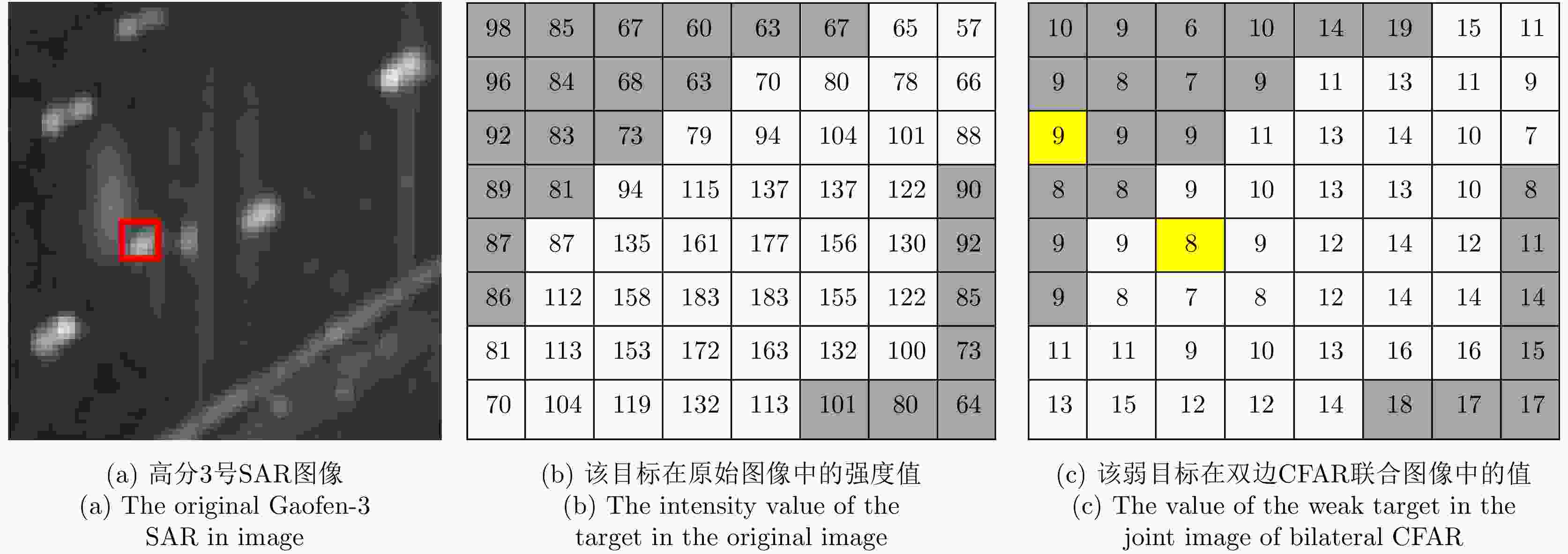
 下载:
下载:

